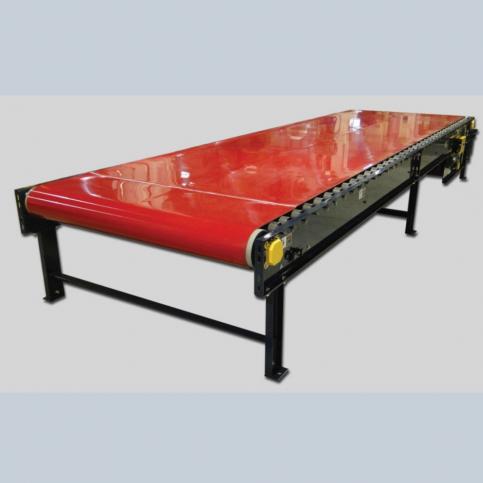Conveyor belts are incredibly efficient products that are used in all kinds of manufacturing and distribution conveying systems. The belts used in these conveyors have to be in tip-top shape, providing enough friction to support differently-shaped packages and having the right tension in order to keep the conveying process smooth.
It is easy to tell when a conveyor belt is frayed, needs cleaning, or needs replacing because its surface is old or damaged. However, problems with belt tension can be a little harder to diagnose.
In today’s blog, we will be addressing how to check belt tension, how to properly tension a belt, and how to care for it.
The Importance of Belt Tension
The best belt tension for your conveyor system is typically defined as the lowest tension possible that will not result in slippage. Lower tensions are preferred because high belt tensions will cause unnecessary wear to both the belt itself and surrounding components such as bearings and shafts. The extra pressure caused by excessive tension can cause pulleys to break or wear down prematurely. It can also lead to tracking problems, which will compromise the smoothness of the conveying process and potentially cause costly downtimes. On the other hand, excessively low tensions can cause slippage and other issues such as pulley lagging, improper belt tracking, and premature belt failure.
Maintaining and Checking Belt Tension
Here are the easiest to spot signs of improper belt tension:
- Belt lacing pulling out: (too much tension)
- Cupping or curling belt edges: (belt not tracking proper
- Belt stalls periodically: (not enough tension)
- Belt residue found under conveyor: (belt not tracking properly)
- Squealing noises: (too much tension or not tracking properly)
Next, you need to tension the belt properly. Empty the conveyor of all products and tension the belt until it does not slip. Then, slowly add products and as you go along, keep tensioning the belt to avoid slippage until you reach the maximum load capacity of your conveyor system. Make sure to test this tension once again by restarting the conveyor with a full product load and check for slippage.
On top of belt tensioning, you will need to continue to maintain your conveyor belt through these measures:
- Routine inspections
- Frequent belt cleaning
- Never exceeding the weight capacity
These are the three easiest steps to follow to make sure that your conveyor belt is in good shape. For additional maintenance expertise, you will need to get a professional team to conduct preventative maintenance on your conveyor system. Norpak Handling is the leading provider of conveyor solutions and services to businesses all over Canada. You can always count on us if you need help choosing the right system, or if you need maintenance assistance. Call us today for more information on our services!










